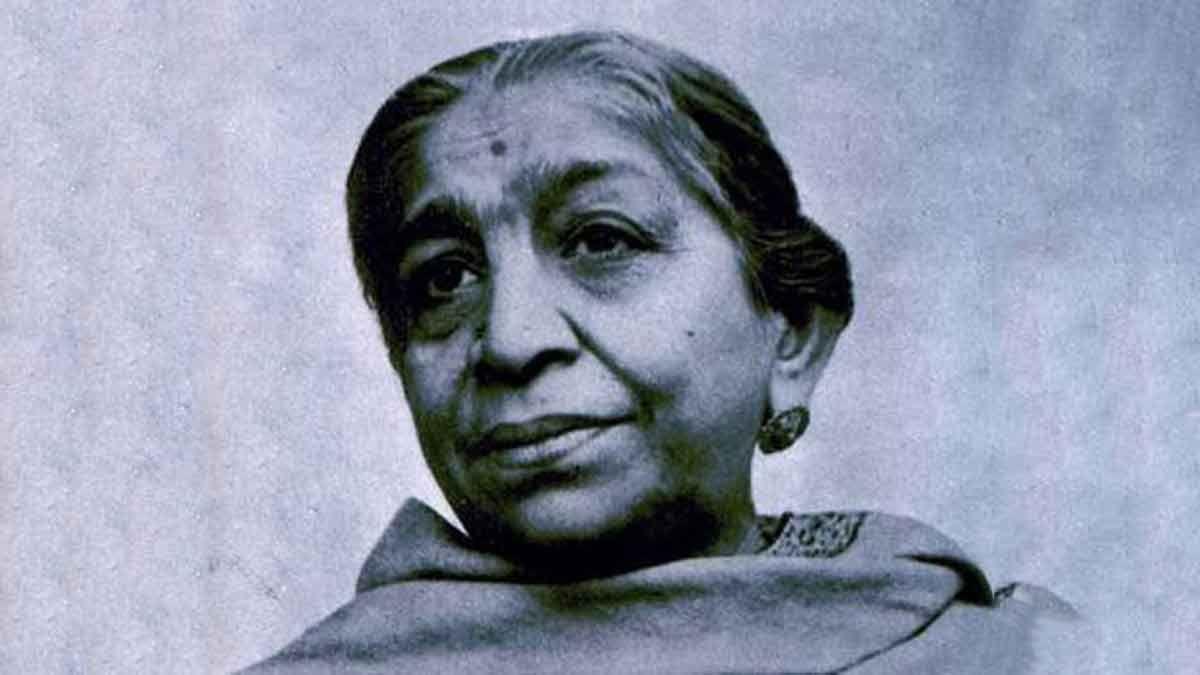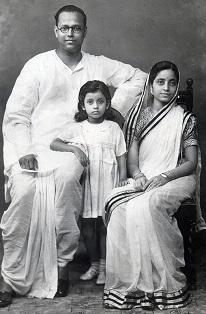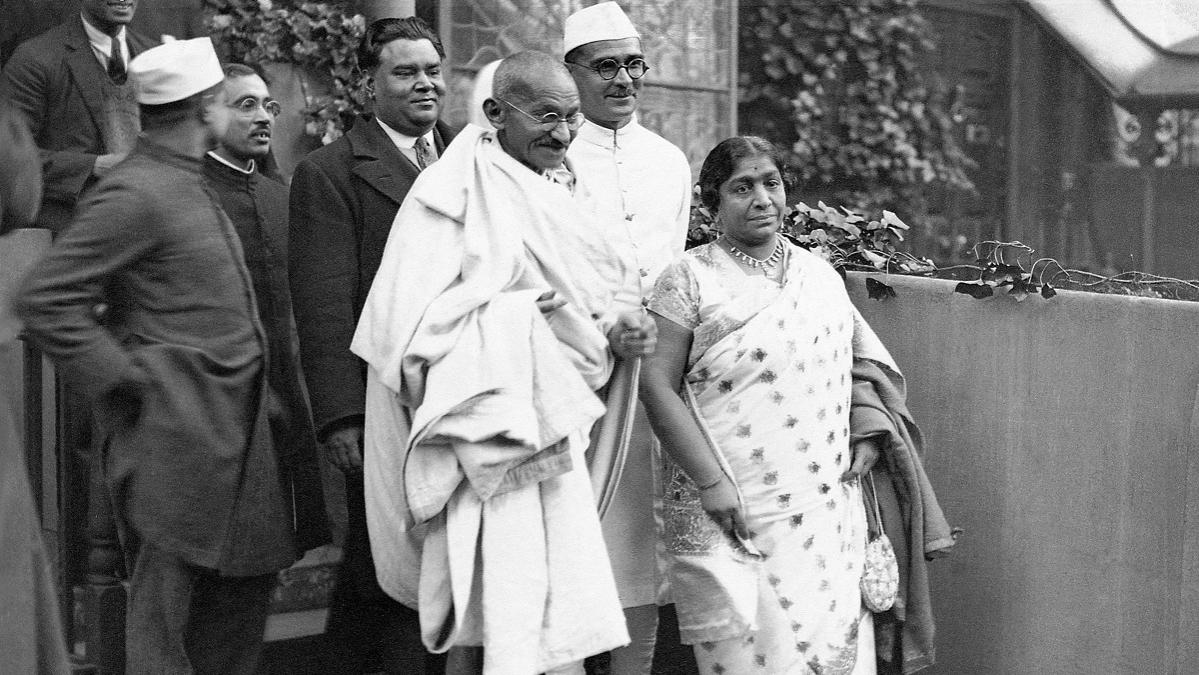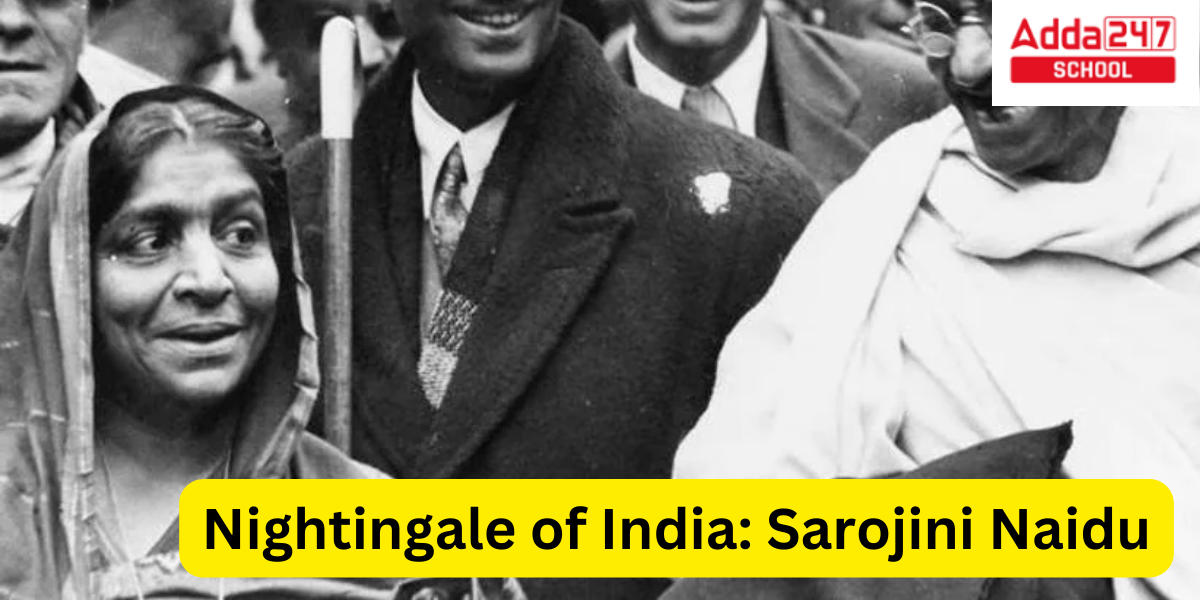Nightingale of India
Sarojini Naidu, also known as the Nightingale of India, was a feminist, poet, and political activist from India. She played a significant role in India’s fight for independence from colonial control as a supporter of civil rights, women’s emancipation, and anti-imperialist beliefs. Sarojini Naidu (Nightingale of India) was also the first Indian woman to be selected as governor of an Indian state and to serve as president of the Indian National Congress (United Provinces).
Nightingale of India: Who gave the title?
Due to the colour, imagery, and lyrical nature of her poems, Sarojini Naidu (Nightingale of India)’s literary work as a poet earned her the moniker “Nightingale of India” or “Bharat Kokila” by Mahatma Gandhi.
Nightingale of India: About Sarojini Naidu
- Nightingale of India (Sarojini Naidu), who was raised in a Bengali household in Hyderabad, attended school in Madras, London, and Cambridge.
- After working as a suffragist in England, she was lured to the Indian National Congress’ campaign for the country’s independence from British domination.
- Sarojini Naidu (Nightingale of India) joined the Indian nationalist movement and adopted Gandhi’s swaraj philosophy as her own.
- In 1898, she tied the knot with general practitioner Govindarajulu Naidu.
- The first woman to assume the position of governor in the Dominion of India, Sarojini Naidu (Nightingale of India) was chosen as the President of the Indian National Congress in 1925 and then elevated to that position in 1947 to become the Governor of the United Provinces.
- Children’s poems and poems with heavier subjects like tragedy and patriotism can both be found in Sarojini Naidu (Nightingale of India)’s poetry.
- One of her best-known poems, “In the Bazaars of Hyderabad,” first appeared in 1912 and is still read today.
- In 1949, a heart arrest claimed Sarojini Naidu (Nightingale of India)’s life.

Nightingale of India: Sarojini Naidu’s Personal Life
On February 13, 1879, Sarojini Naidu (Nightingale of India) was born in Hyderabad to Aghorenath Chattopadhyay and Varada Sundari Devi. Her parents lived in the Bengal province’s Brahmangaon Bikrampur neighbourhood of Dhaka. Her father was the principal of Nizam College and a Bengali Brahmin. He was a scientist with a degree from Edinburgh University. Her mother was a Bengali poet.
Of the eight children, Sarojini Naidu (Nightingale of India) was the oldest. Her other brothers, Harindranath and Virendranath Chattopadhyay, were actors, poets, and revolutionaries. In Hyderabad, their family was well-liked.
Nightingale of India: Sarojini Naidu’s Education
In 1891, at the age of twelve, Sarojini Naidu (Nightingale of India) completed her matriculation exam to be eligible for university study, receiving the best position. On a scholarship from the Nizam of Hyderabad, she studied in England from 1895 to 1898, first at King’s College in London and subsequently at Girton College in Cambridge. Sarojini Naidu (Nightingale of India) encountered creatives from the Aesthetic and Decadent movements in England. She had a brief trip to Europe.
Nightingale of India: Sarojini Naidu’s Marriage
In 1898, Chattopadhyay went back to Hyderabad. She married Govindaraju Naidu, a doctor she met while living in England, in the same year, in a union that has been dubbed “groundbreaking and scandalous.” Their long-lasting, blissful marriage received the blessing of both of their families. They had five kids together. Their daughter Padmaja, who served in several government roles in independent India, also joined the Quit India Campaign.

Nightingale of India: Sarojini Naidu’s Political Career
- Naidu began to gain popularity as a public speaker in 1904, advocating for Indian independence and women’s rights, particularly women’s education.
- Her speeches frequently used Nyaya reasoning’s five-part rhetorical structures to frame their arguments.
- In 1906, Sarojini Naidu (Nightingale of India) spoke in the Indian Social Conference and the Indian National Congress in Calcutta.
- Sarojini Naidu (Nightingale of India) was awarded the Kaisar-i-Hind Medal in 1911 for her social efforts in flood relief; however, she later returned it in opposition to the Jallianwala Bagh massacre in April 1919.
- Sarojini Naidu (Nightingale of India) first met Muthulakshmi Reddy in 1909, and then she met Mahatma Gandhi in 1914.
- She attributes Gandhi with encouraging her to take up political activism again. She presided over the INC convention as the organization’s first Indian woman and second female president.

- Sarojini Naidu (Nightingale of India) collaborated with Reddy to create the Women’s Indian Association in 1917.
- Later same year, Naidu travelled to London, United Kingdom, with her colleague Annie Besant, president of the Home Rule League and Women’s Indian Association, to speak in favour of universal suffrage before the Joint Select Committee.
- At the Madras Special Provincial Council, Sarojini Naidu (Nightingale of India) also backed the Lucknow Accord, a joint Hindu-Muslim call for British political change.
- Sarojini Naidu (Nightingale of India) was a well-known public speaker who included her poetry into her speeches and was noted for her charisma.
- Gandhi, Sarala Devi Chaudhurani, Gopal Krishna Gokhale, and Naidu became close friends.
- She joined Gandhi’s peaceful satyagraha movement after 1917 to protest British tyranny.
- As part of her ongoing efforts to promote freedom from British rule, Sarojini Naidu (Nightingale of India) travelled to London in 1919 as a member of the All India Home Rule League.
- Sarojini Naidu (Nightingale of India) took part in the Indian campaign against cooperation the next year.
Unsung Heroes of Freedom Struggle, 1857 to 1947
Nightingale of India: Sarojini Naidu’s Writing Career
- Around the age of twelve, Naidu started writing. The Nizam of the Kingdom of Hyderabad was impressed by her Persian-language drama, Maher Muneer.
- English-language poet Naidu mostly wrote lyric poetry in the British Romantic tradition, which she found difficult to reconcile with her Indian nationalist ideals at times.
- She was renowned for her vivid descriptions of India and her use of full sensory imagery in her writing. She was regarded as a talented poet and known as the “Indian Yeats.”
- “The Golden Threshold,” her first book of poems, was released in London in 1905.
- The publication’s idea came from Edmund Gosse, and Arthur Symons wrote the introduction.
- It also featured a drawing by John Butler Yeats depicting Sarojini Naidu (Nightingale of India) as a young woman wearing a white dress with ruffles.
- The Bird of Time, her second and most explicitly nationalist volume of poetry, was released in 1912.
- It features “In the Bazaars of Hyderabad” and was published in both London and New York.
- The Broken Wing, her final collection of original poems published during her lifetime (1917).
- She had earlier read the poem “The Gift of India” to the Hyderabad Women’ War Relief Organization in 1915, in which Sarojini Naidu (Nightingale of India) criticised the British empire for exploiting Indian mothers and troops.
Moreover, it contains “Awake!” with which she ended a 1915 speech to the Indian National Congress to call for unified Indian action. It was dedicated to MA Jinnah. In 1928, a book of all of her published poetry was published in New York. Her daughter Padmaja Naidu compiled The Feather of the Dawn (1961), which included all of Naidu’s published and unpublished poems.
Swadeshi Movement in India- Leaders, Impact on History
Nightingale of India: Sarojini Naidu’s Death
On March 2, 1949, around 3:30 p.m. (IST), Sarojini Naidu (Nightingale of India) passed away in the Government House in Lucknow due to a heart arrest. Her physicians urged her to rest after she returned from New Delhi on February 15, thus all of her formal appointments were postponed. Her condition significantly worsened, and bloodletting was done on March 1st after she reported having a strong headache.
Sarojini Naidu (Nightingale of India) coughed up a fit and fell to the ground. At around 10:40 p.m. (IST), Naidu allegedly requested that the nurse caring for her sing to her, lulling her to sleep. After that, she passed away, and along the Gomati River, her funeral rites were carried out.
Sarojini Naidu: Essay, Biography, Poems, Books
Freedom Fighters of India Names List, Images & Their Contribution









 [Live Updates] NTA CUET Undergraduate Re...
[Live Updates] NTA CUET Undergraduate Re...
 IGNTU CUET Cutoff 2025, Check Category W...
IGNTU CUET Cutoff 2025, Check Category W...
 CGBSE Revaluation Result 2025 Announced ...
CGBSE Revaluation Result 2025 Announced ...









